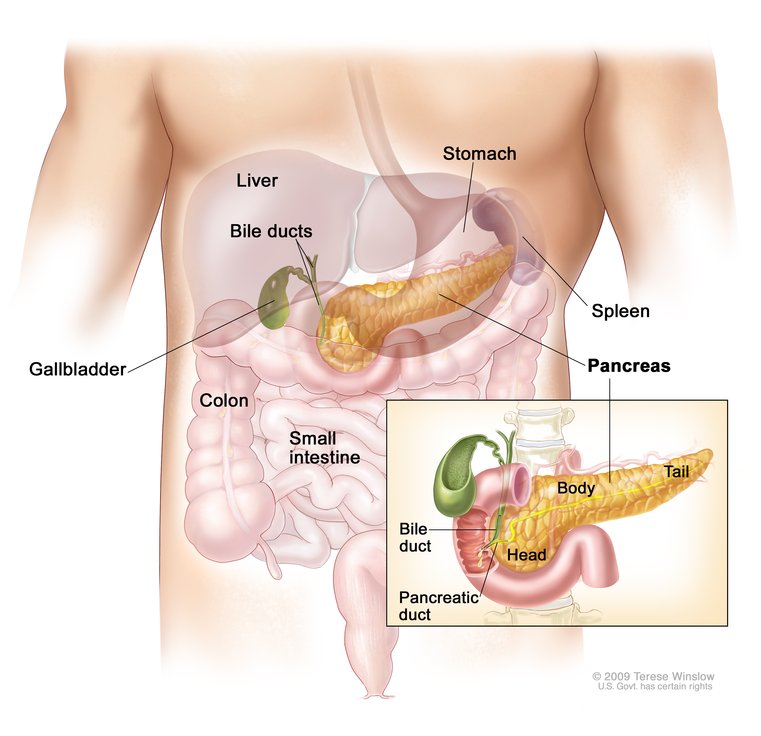Usually, but not always, pancreatic surgery is performed for cancer, or for conditions that are likely to become cancerous. It requires a multidisciplinary team that includes surgeons experienced in the performance of these demanding operations, highly skilled gastroenterologists with advanced endoscopic skills, radiologists dedicated to the careful performance of diagnostic studies, oncologists who are willing and able to care for patients with pancreatic cancer, and nurses accustomed to caring for patients undergoing complex gastrointestinal operations.
The most common cancer, adenocarcinoma, accounts for approximately 97% of pancreatic cancers. There will be about 44,000 pancreatic cancers diagnosed in the US this year. The other 3% are mostly neuroendocrine tumors of the pancreas. They are uncommon, but important, because they are much more often curable.
For more information on pancreatic cancer:
Normal Pancreas:
Types of operations:
Distal pancreatectomy: In this operation, some portion of the tail of the pancreas is removed, leaving the head of the pancreas. Because one does not have to remove the bile ducts, adjacent intestine, or re-route the main duct of the pancreas, this is generally a simpler procedure than a Whipple procedure. Dr. Vierra was among the first surgeons in the world to perform this operation by laparoscopy, and he most commonly performs this operation by laparoscopy.
Whipple procedure: In this operation, a tumor of the head of the pancreas is removed. Because of the ducts and blood vessels that run through this area, this usually requires removal of the gallbladder, about 7 inches of the duodenum, head of pancreas, and sometimes but not always a portion of the stomach. This is a generally more complex procedure, taking on average 5-6 hours to complete, and it is the most commonly performed pancreatic surgery.


